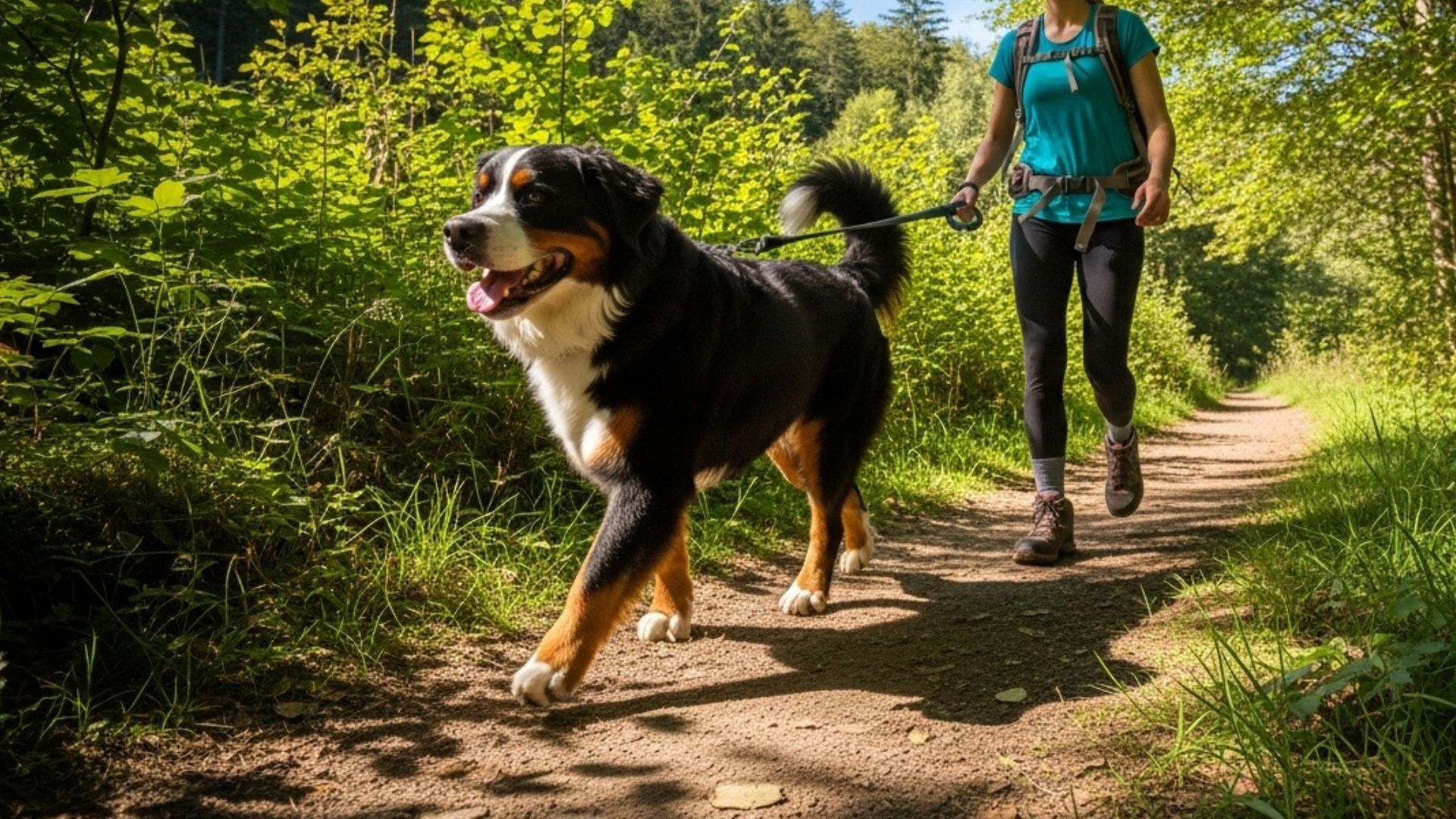Choosing a dog isn’t just about looks or breed popularity—it’s about matching their health and lifestyle to yours. A healthy dog breed can mean fewer vet visits, more active adventures, and years of joy spent together without the stress of chronic illnesses.
Whether you’re an outdoor enthusiast, a busy professional, or a family with little ones, the right dog breed can seamlessly fit into your daily routine. From playful pups that love long hikes to calm companions who enjoy lounging by your side, there’s a healthy dog breed waiting for every lifestyle.
We’ll explore some of the healthiest dog breeds known for their longevity, resilience, and adaptability. You’ll discover breeds that not only thrive physically but also bring emotional happiness and companionship.
So, if you’re ready to find a furry friend who matches your energy, your personality, and your life, keep reading—we’re about to introduce you to dogs that aren’t just cute but built for a long, happy life by your side.
Did You Know? Studies show that most dogs can live up to 10-13 years or more with proper exercise and diet. Regular vet visits and mental stimulation are the real “fountain of youth” for dogs!
Healthy Dog Breeds That Suit Your Lifestyle
1. Border Collie
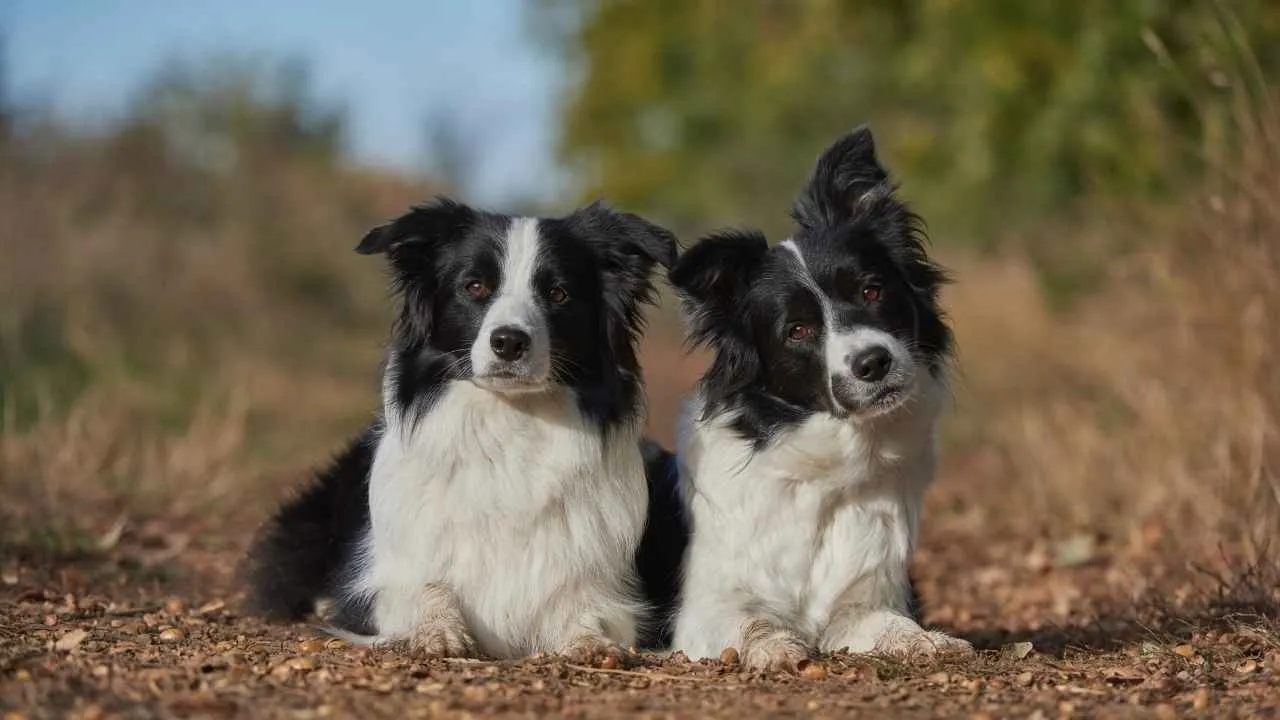
Life Span: 12 to 15 years
If intelligence and energy had a poster child, it would be the Border Collie. These dogs are athletic, sharp, and endlessly driven, making them the ultimate companions for anyone who loves a dog that’s as much a teammate as a pet.
Think of them as furry little Einsteins with boundless stamina—and maybe a bit of a workaholic streak. Socially, Border Collies get along well with other dogs and can even coexist peacefully with cats—provided they’re introduced and socialized early, as per Petplan. They’re loyal, loving, and happiest when included in family life.
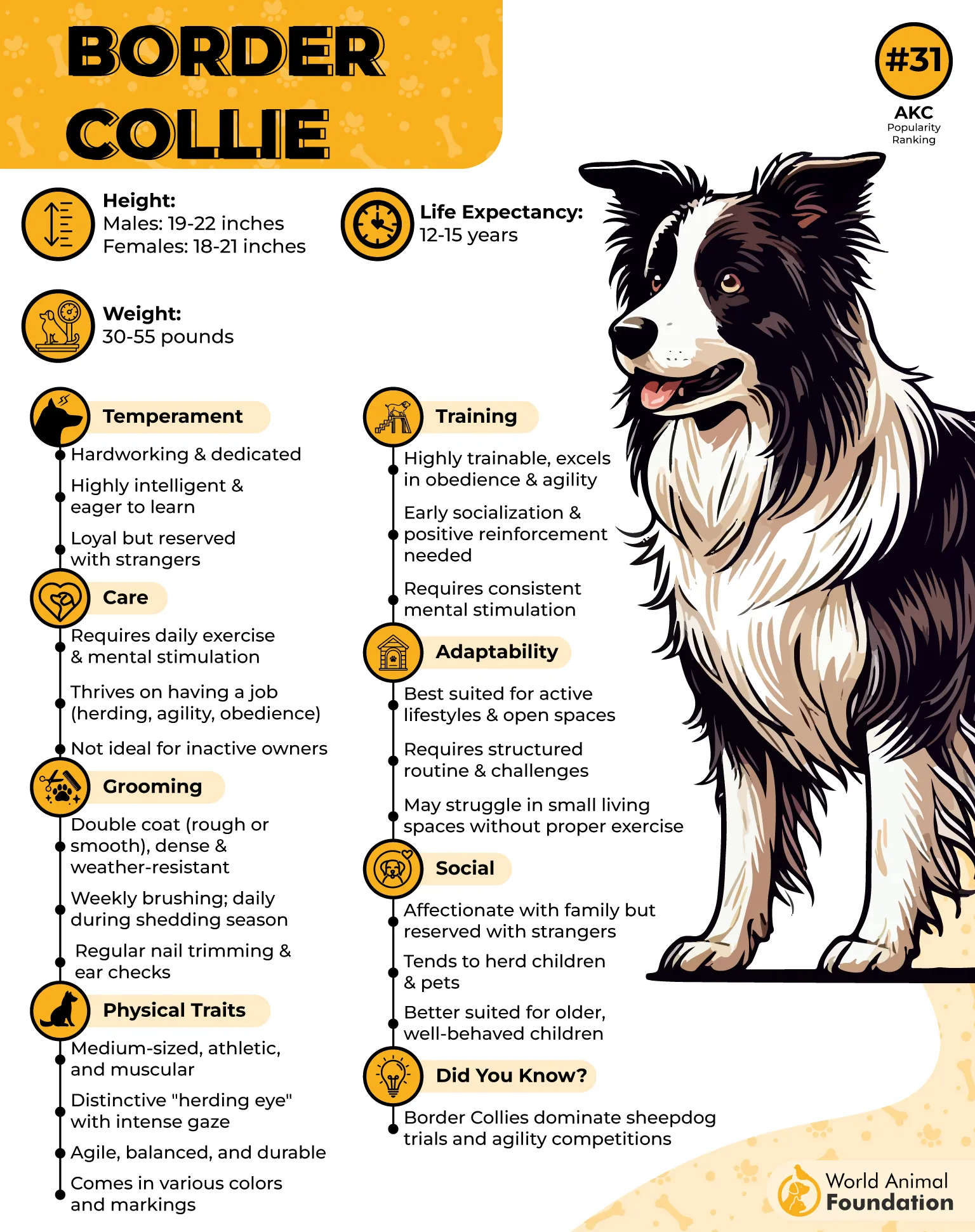
Health-wise, they are generally hardy and long-lived, averaging 12–15 years. Still, some may be prone to deafness, collie eye anomaly, or epilepsy, so regular vet checkups and monitoring are important to keep them thriving.
Border Collies thrive when they have a job to do, whether it’s herding, learning tricks, or mastering obstacle courses. Without mental and physical stimulation, they can get bored and a little mischievous, so puzzle toys, training sessions, and long runs are a must.
If you want a smart, active, and endlessly loyal companion who will challenge your mind as much as your running shoes, the Border Collie is the top dog for energetic, engaged households.
2. Siberian Husky

Life Span: 12 to 14 years
Meet the Siberian Husky, the dog version of a winter sports champion. With their striking blue (or sometimes mismatched!) eyes, thick coats, and wolf-like appearance, Huskies are impossible to ignore.
But they’re more than just a pretty face—these energetic dogs bred to pull sleds across snowy Siberia, which means they thrive on physical activity and adventure, says WebMD.
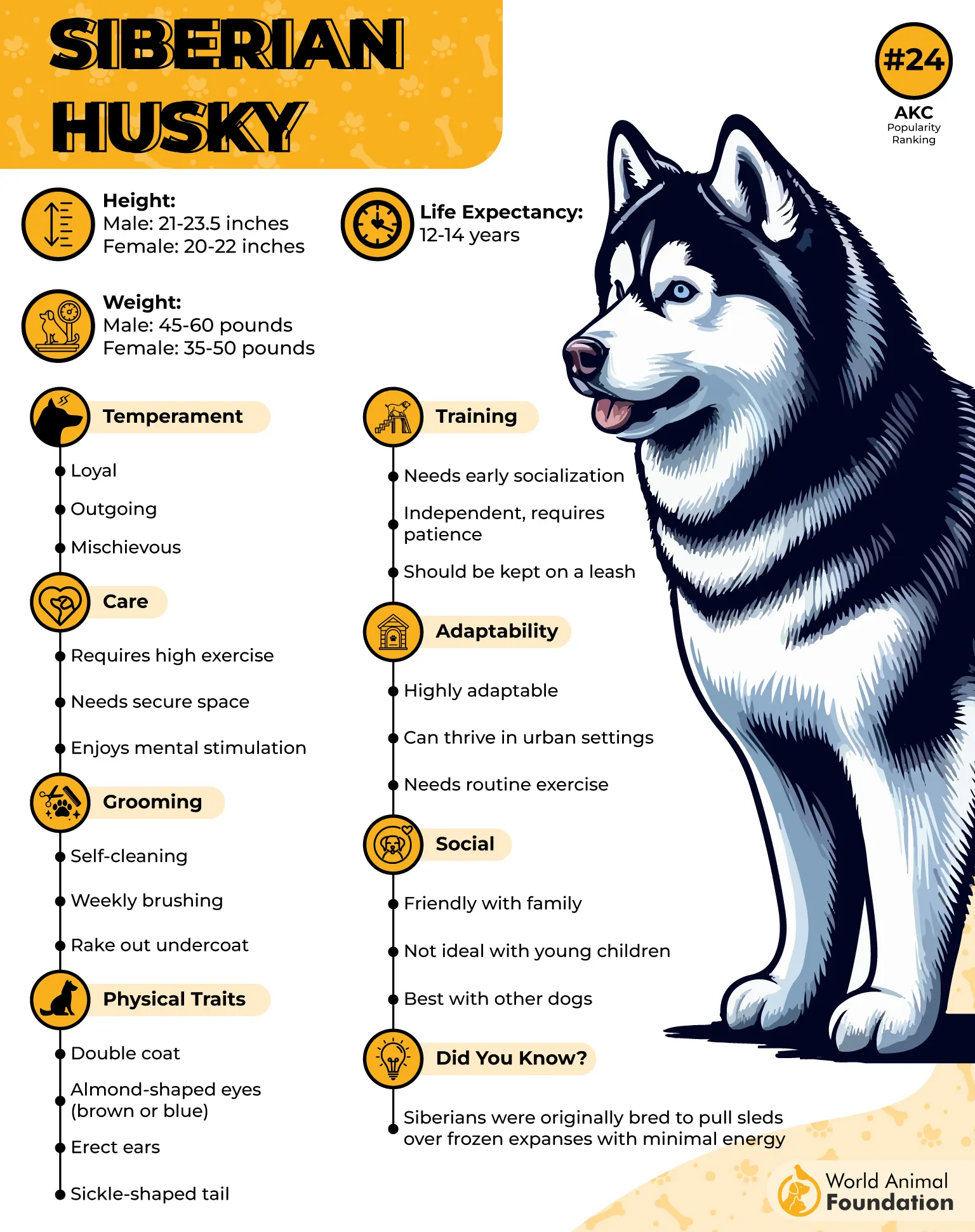
Huskies are friendly, social, and great with kids and other dogs, making them a family favorite—if your idea of family fun includes running, hiking, or even just throwing the occasional impromptu sprint around the yard.
Be warned: these working dogs are clever escape artists, have a strong prey drive, and a flair for Houdini-level breakouts. A secure yard is essential, unless you want daily episodes of “Where’s Fluffy Today?”
Health-wise, Huskies are generally robust, but like many active breeds, they can be prone to hip dysplasia and eye conditions. Regular vet check-ups and preventative care will help ensure your Husky stays in top form, ready for both snowstorms and couch snuggles.
If you want a playful, adventurous, and endlessly charming dog who can go from marathon runner to your lap buddy in seconds, the Siberian Husky is the ultimate companion for active households.
3. Beagle

Life Span: 10 to 15 years
Famous for their keen noses and floppy ears, these dogs seem permanently set on “adventure mode,” sniffing out every corner of your yard—and probably your neighbor’s garden too. But don’t worry—they’re just being thorough researchers of life.
Beagles are sturdy, resilient, and generally healthy, with strong immune systems that help them tackle most bumps in the road. PetMD noted, they can be prone to obesity, thanks to their love for food (a trait inherited from their scent-hound ancestors).
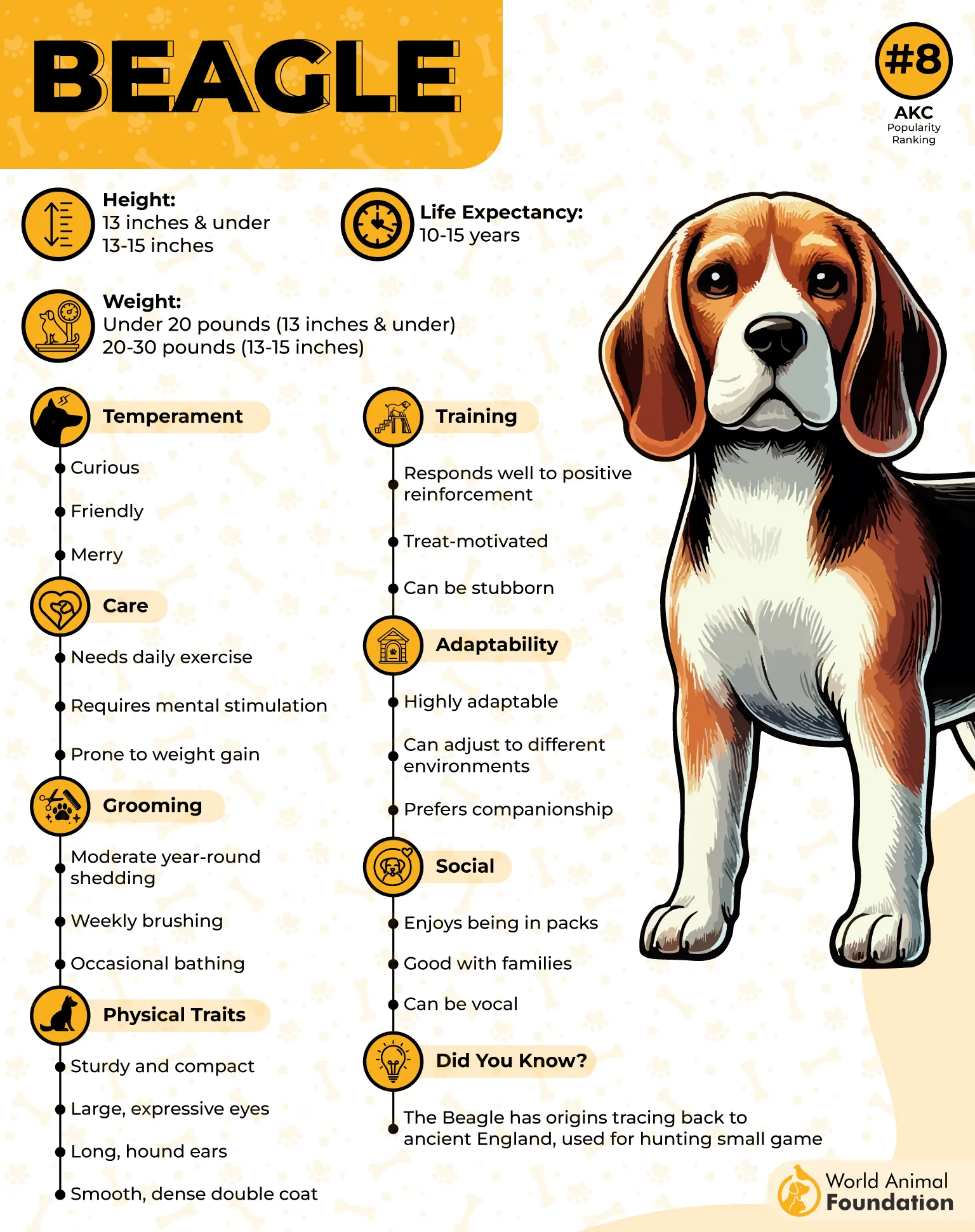
Think of them as furry vacuum cleaners with a built-in GPS for snacks. Balanced diets and regular exercise are key to keeping them in tip-top shape.
Training a Beagle can be a little like convincing a cat to take a bath—they’re independent thinkers. Patience and consistency win the day, and in return, you get a loyal, playful, and endlessly entertaining companion. These good pets get along well with kids, other pets, and anyone who brings treats.
Health-wise, eye and hip issues are rare and typically appear in older age. With proper care and vet checkups, your Beagle can live a long, happy life chasing scents, cuddling up for naps, and generally being the lovable goofball they were born to be.
If you want a curious, food-loving, adventure-ready buddy with a heart of gold, the Beagle is the perfect nose-to-tail companion.
4. Greyhound
Life Span: 10 to 13 years
Meet the Greyhound, the luxury sports car of the dog world. Greyhounds are classified as large breed dogs, with sleek, aerodynamic bodies that taper from their heads to their tails. These hounds are sight hunters, meaning they rely on their sharp eyes and lightning-fast reflexes rather than scent to chase prey.
Translation: if you have a cat, rabbit, or anything that moves faster than a slow walk, introductions must be handled with care—or your “pet racetrack” could turn chaotic.
Overall, they are a low-maintenance and healthy breed, though they can inherit certain untreatable conditions that genetic testing can help identify. Their lean bodies and delicate skin require gentle care and protection from extreme temperatures.
Pet owners should also be aware of minor health issues to watch for. They love short bursts of sprinting or games of fetch, then happily stretch out beside you like a furry, velvety blanket.
Despite their reputation as sprinters, Greyhounds are a delightful paradox: high-energy athletes at heart but surprisingly content to be cuddly couch potatoes once their zoomies are out.
5. Havanese
Life Span: 14 to 16 years
Say hello to the Havanese, Cuba’s pride and joy in the canine world. These little fluff balls are full of personality, affection, and just enough mischief to keep you on your toes. With a lifespan of 14–16 years, they’re long-term companions who love nothing more than cuddles, attention, and being part of the family action.
Havanese dogs are smart, trainable, and incredibly friendly. They adore children and can turn even the dullest afternoon into a playful extravaganza with tricks, games, and endless affection. Think of them as a pint-sized entertainer who never asks for a ticket—just your love and maybe a treat or two.
Health-wise, these pups are generally robust, with few genetic problems, making them one of the healthier small breeds. That said, they can be prone to joint issues like luxating patella and eye problems such as cataracts, so regular vet checkups are still key.
And yes, that gorgeous, silky coat requires regular grooming—because while Havanese are low on drama in health, they’re high on drama in style. A well-groomed Havanese isn’t just a pet; they’re a walking, wagging, attention-grabbing showstopper.
In short: if you want a cheerful, affectionate, and stylish companion who lives to love and entertain, the Havanese is your little Cuban superstar.
6. Poodle

Life Span: 10 to 18 years
When you think of Poodles, you might picture fancy haircuts and tiny bows—but don’t let the stylish exterior fool you.
Poodles are brainiacs at heart, whether you’re talking Standard, Miniature, or Toy. These dogs are like the Einsteins of the canine world: clever, eager to learn, and surprisingly athletic.

On the health side, Poodles are generally long-lived and robust, often outlasting many other breeds. But don’t ignore the fine print: joint problems (think hip dysplasia) and eye issues can pop up, so regular vet check-ups are a must. And just like humans, a little preventative care goes a long way.
Poodles thrive on mental stimulation and love activities like swimming, fetching, and learning tricks. Seriously, if you ever wanted a dog who could practically audition for a doggy talent show, the Poodle’s your star. They’re social butterflies too, usually getting along well with kids, other dogs, and even cats.
In short, Poodles combine elegance, smarts, and loyalty in one fluffy package. They’re the type of dog who’ll fetch your slippers, impress your friends with tricks, and still look runway-ready while doing it. Who says brains and beauty don’t mix?
7. Basenji
Life Span: 13 to 14 years
Meet the Basenji: the dog that redefines what “quiet” means. These sleek, small hounds are famously known as the “barkless dogs” — yes, you read that right. Instead of barking, they make a sound called a “baroo,” which is part yodel, part squeak, and entirely charming.
If you live in an apartment or have a noise-sensitive neighbor, the Basenji might just be your canine soulmate. While generally healthy, Basenjis do have a few quirks your vet will want to keep an eye on.
They can be prone to Fanconi syndrome, a kidney condition that’s best caught early through testing. Plus, they sometimes struggle with hypothyroidism and hip problems, so regular check-ups and a little TLC go a long way.
These dogs are also hunters at heart. If you have small pets, keep them on a leash or under supervision — your hamster might be great company, but the Basenji sees it as a potential snack. Their intelligence and curiosity mean they can get into mischief if left unsupervised, so puzzle toys and training are your best friends.
With an average lifespan of 13–14 years, the Basenji is a long-term companion who brings energy, elegance, and just a dash of chaos into your life.
Plus, a DNA test isn’t just a fun party trick — it can reveal vital info about your dog’s breed traits and health risks, helping you and your vet give your four-legged friend the best care possible.
Conclusion
In the end, dogs tend to bring endless joy and companionship to their pet parents, especially when you choose a breed that fits your activity level and lifestyle. From Australian Shepherds and German Shorthaired Pointers to the Shiba Inu or any smaller dog, these intelligent, easy-to-train pups make great companions.
Whether you love playing fetch, joining in on outdoor activities, or simply enjoying their good health, a little regular exercise and care will help them stay healthy and prevent illnesses. No matter the breed, the right active companion will always make a home happier—starting from puppy days and lasting a lifetime.


